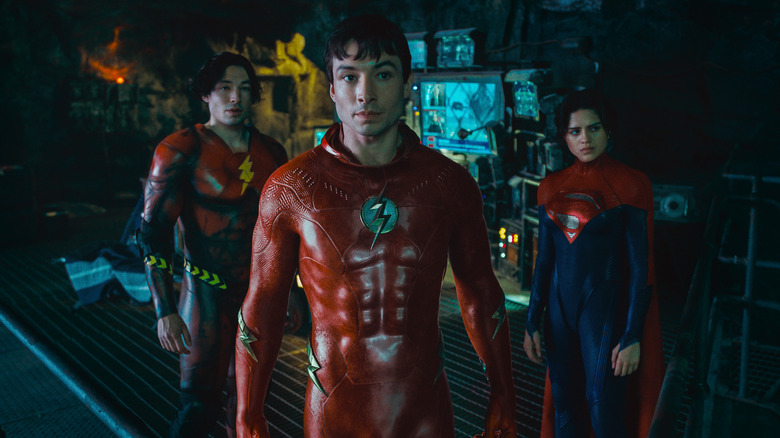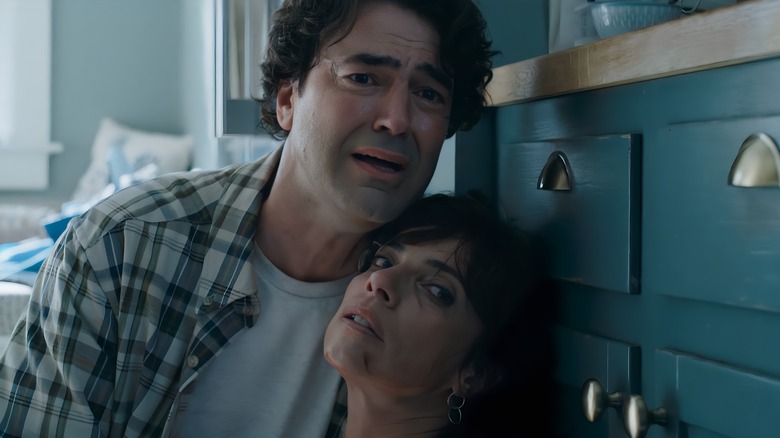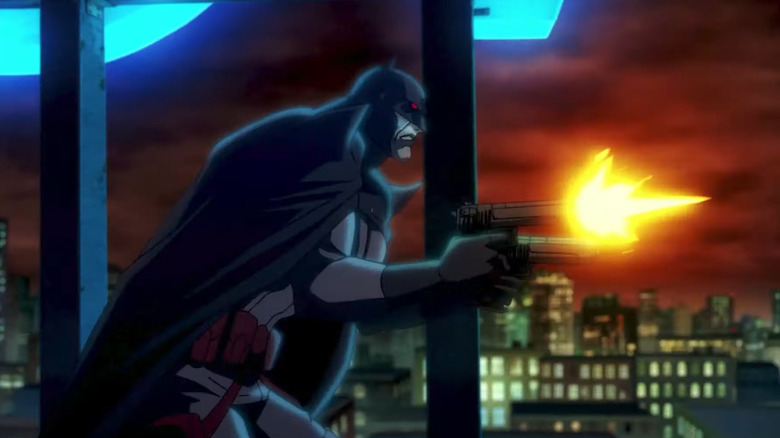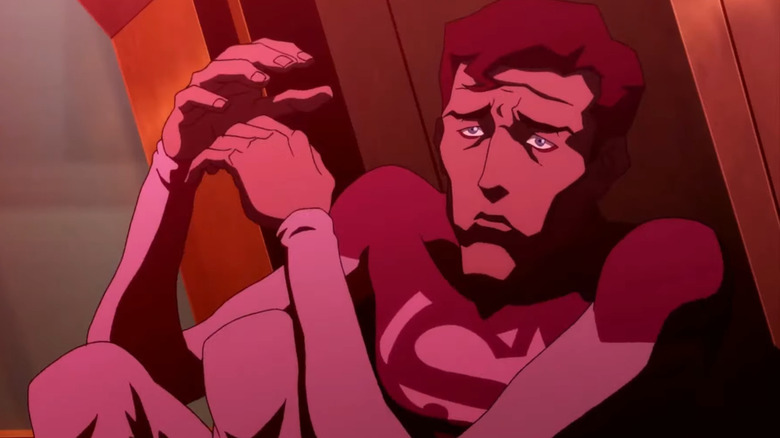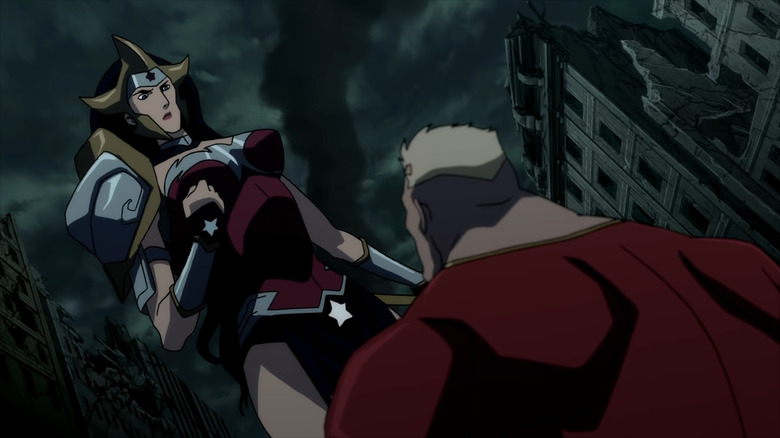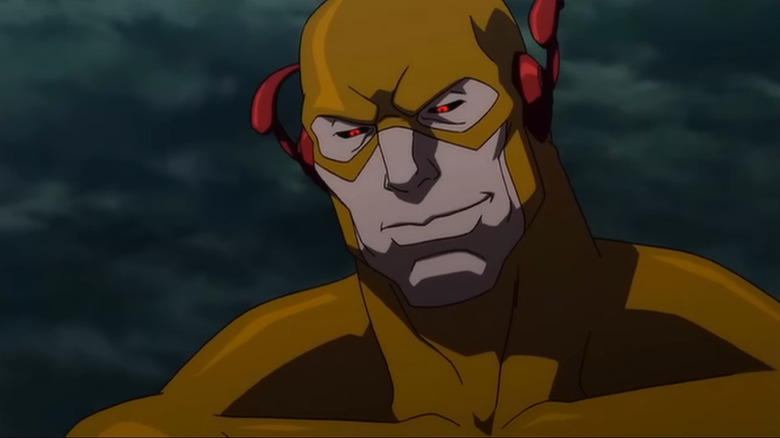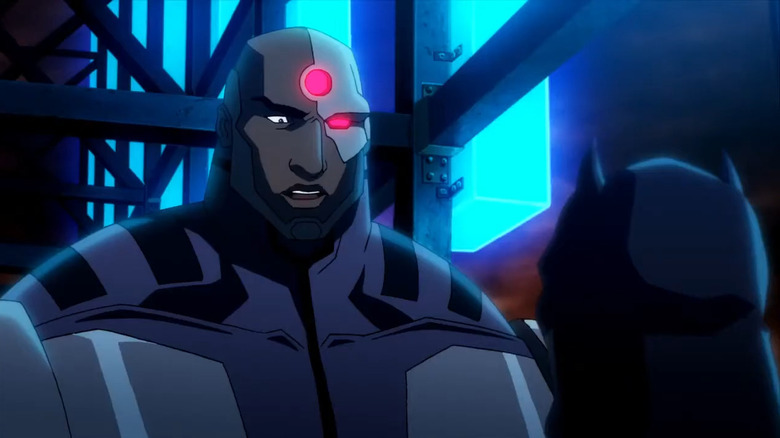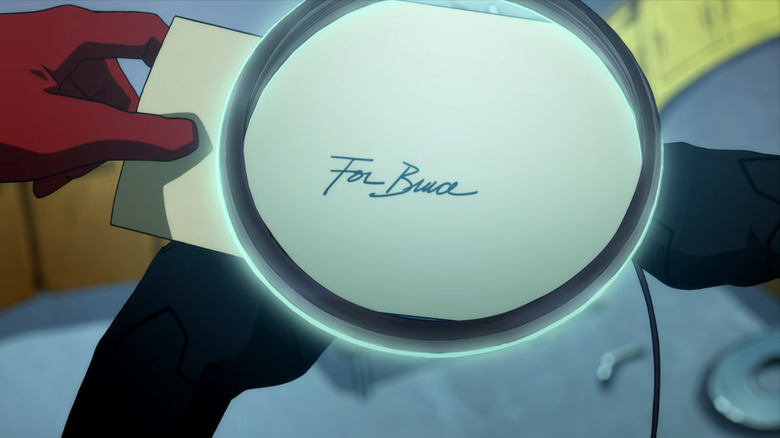How Andy Muschietti's The Flash Movie Changes Flashpoint Events & The DCU
Contains spoilers for "The Flash"
Andy Muschietti's "The Flash" is a big, colorful, messy film, one that ambitiously attempts to turn one of the most famous event-comic storylines into a solo superhero outing starring a relatively new version of Barry Allen played by Ezra Miller. Miller is a holdover from the Zack Snyder era of DC films whose future is yet to be determined at the studio, both for their controversies — not least of which belong to "The Flash" star Miller themselves — and their ties to the previous continuity. As such, the studio was likely wary of how big they could let this adaptation get without creating even more narrative issues for new CEOs James Gunn and Peter Safran to deal with.
In turning Geoff Johns and Andy Kubert's "Flashpoint" into a digestible, two-and-a-half-hour romp that can be accessible to a desperately needed new fanbase while simultaneously referencing and retconning over a decade's worth of missteps and triumphs in the DC Extended Universe, Muschietti and co. understandably had to make some huge changes. Some actually improve upon the source material or skillfully weave the broad narrative into the already established world audiences have watched unfold since "Man of Steel." Other changes, though, are just so baffling they almost break the film entirely.
Flashpoint was originally a mystery
Being both an immensely popular and relatively recent entry in the DC mythology, "Flashpoint" is pretty well-known among those even casually interested in comic book lore. There was even an animated film titled "Justice League: The Flashpoint Paradox," that introduced the story to a new audience of fans through a surprisingly faithful translation. Because of this, it wouldn't have been possible to preserve the greatest quality of "Flashpoint," which is its final twist.
The comic book essentially opens with Barry Allen waking up at his day job, confused and briefly unaware that he's in a timeline on the brink of total destruction. Once he witnesses the destruction firsthand and realizes his powers have mysteriously disappeared, he deduces that his infamous time-traveling archnemesis (whom we'll address in a minute) has somehow altered events to rid the world of heroes. With the help of a few found allies, Barry regains his speed and finds his foe, only to hear that same foe reveal that it was actually Barry who reset the timeline to save his mom (who, at this point, has only appeared in one scene after Barry wakes up).
What makes this twist so effective is that it works like a narrative key, unlocking deeper layers of the story you've been reading the whole time. Throughout "Flashpoint," you see Barry try and fail time and time again to make things right by believing that he can simply run or fight his way out of anything. "Flashpoint" waits until the very last minute to reveal the actual lesson Barry needs to learn, yet the story still builds to it subtly by hiding behind the locked narrative layer. When the twist is finally revealed, it's all at once surprising, justified, and satisfying.
Bruce Wayne is dead, and Batman is a killer
Though getting to see more of Michael Keaton's grossly underrated Batman on screen is always a treat, the Bruce Wayne we get in "The Flash" is a pretty irreparable diversion from some of the comic's best moments — specifically, the ones that directly unfold as a consequence of his death.
In the "Flashpoint" universe, Bruce Wayne was gunned down in front of his parents in Crime Alley. His mother, Martha, descends into madness and becomes the psychopathic murderer known as the Joker. Her husband, Thomas, becomes the Batman — an aged, hulking vigilante with no qualms about killing criminals. In his very first scene, he wields twin pistols and almost executes a subdued villain by dropping her off a roof.
Both Thomas and Keaton's Bruce experience similar growth by interacting with the hopeful, optimistic Barry, but Thomas' motivations are way clearer. Because the world of "Flashpoint" is so broken, Thomas helps Barry in order to recreate the world where his son is alive. In doing so, he finally finds peace in the tragedy that's taken over his life — and even helps his son do the same later on.
Superman's story is somehow even darker
"The Flash" may manage to pay light homage to one of the greatest "Superman" Elseworlds comic books — "Superman: Red Son" — by establishing Kara Zor-El (aka Supergirl, played by Sasha Calle) in Russia, but it's hard for the sequence to stand its own against its brutal yet strangely cathartic comic book counterpart.
The Superman of "Flashpoint" is also imprisoned, tortured, and experimented upon, though by the U.S. military instead — which feels both apt and incredibly grim. He was ostensibly captured after his rocket crash-landed not in the fields of Smallville, Kansas, but in the heart of Metropolis itself. It hit the highly populated city with the force of a nuclear bomb, leaving catastrophic destruction in its wake.
Superman and Supergirl have comparable roles in their respective stories, with both leaving shortly after they're rescued and returning for the final battle out of a sense of duty. "The Flash" admirably attempts to tighten the subplot ever so slightly, to avoid it becoming the detour it borders on in the comics.
Instead of invading Kryptonians, a war rages between Atlanteans and Amazons
In "The Flash," Barry seems to realize the depth of his failure when it becomes clear that — because of his actions — Earth will be destroyed by General Zod (Michael Shannon) and his Kryptonian invaders. It's a smart alteration for the film, one that makes the story more efficient, reimagines a time and event that audiences are already familiar with, and brings back a fan-favorite character. More than that, it sidesteps one of the more muddled subplots of the comic book series: the war between Aquaman and Wonder Woman.
Developed as "Game of Thrones" was on its way to becoming a massive hit, one has to imagine that Johns pitched this storyline in reaction and with reference to the HBO juggernaut. Essentially, "Flashpoint" Aquaman and Wonder Woman are not superheroes, but warrior-monarchs. After agreeing to a peace treaty, the two formerly opposing leaders have an affair, sending Queen Mera into a jealous rage that costs her her head. The book implies that, without knowing the full context of Mera's murder, the Atlanteans called it an act of treachery and pressured Aquaman to declare war on a woman he once loved.
The setup verges on being convoluted (as well as sexist), and trying to adapt it into a movie already as packed as "The Flash" would have been an error. That said, it does give their apocalyptic conflict a humanity that definitely lacking in the Kryptonian skirmish we see in "The Flash."
Flashpoint's villain is far more compelling
For how little he actually appears in the pages of the story, the villain of "Flashpoint" pretty much steals the show by the time he shows up to bring Barry's world crashing down. Yes, we're talking about Eobard Thawne, the Reverse Flash — a key "Flash" rogue who would easily outshine "The Flash's" Dark Flash any day of the week.
Admittedly, part of what makes Thawne such an incredibly effective specter throughout "Flashpoint" is how much his character has been established beforehand. Barry only travels back in time because he celebrates his mom's birthday for the first time since discovering she had been killed essentially because of him. Thawne needs Barry to become the Flash in order to gain and maintain his powers, so he's forced to keep Barry alive and his mother dead. Yet in "Flashpoint," Barry's attempt to save his mom unintentionally turns Thawne into a living paradox, essentially freeing him from the temporal contract that once prevented him from harming his most hated enemy. In the book, Johns uses this development to drive the stakes of their final confrontation up to 11 by finally giving Thawne the capability to kill the Flash — it is one of the most gripping finale action sequences in an event comic.
Of course, DC hasn't laid even an inch of the appropriate groundwork to bring Reverse Flash in as an enemy for this film — or, at the very least, not for a "Flashpoint" adaptation. Taking that into consideration, Dark Flash is a perfectly fine substitution who mostly succeeds as an antagonist.
There are several more main characters in Flashpoint
In addition to Wonder Woman, Aquaman, Thomas Wayne, Superman, and the Reverse Flash, "Flashpoint" focuses quite heavily on the character Cyborg. Ray Fisher plays the character in both versions of the "Justice League" film, though he subsequently had a public falling-out with the studio over serious allegations of racism and on-set abuse. Fisher even alleged at one point that "Flashpoint" scribe Geoff Johns (who also co-ran DC films until 2018) threatened him over an argument about Cyborg's catchphrase "booyah" (an allegation which Johns has since denied). All this to say, it seems clear why Fisher wouldn't be interested in returning to Warner Bros. and DC for another project, and why they likely aren't interested in having him either.
In the comics, Cyborg is one of the few heroic figures in the "Flashpoint" universe, acting largely on the orders of the American government. Though his aims are always altruistic, his confidence in his cause is shaken when he discovers that the government he works for is torturing and detaining Superman.
"The Flash" is neither better nor worse without Cyborg, but it's worth interrogating whether or not it could've benefitted from one or two more recognizable characters in the core cast. The dynamic between the two Barrys goes from stale to grating rather quickly, and neither Batman nor Supergirl is able to generate the necessary chemistry to keep things fresh or electric for the full runtime.
Flashpoint has one of the greatest endings in comics – and it could've been even greater on film
Arguably the biggest creative misstep made by "The Flash" is its ending. After learning that he needs to accept things as they are, and that any small alteration to the timeline could irreparably harm the past and the future, Barry selfishly chooses to change the past one more time in order to exonerate his father. The only consequence appears to be that Bruce Wayne now looks like George Clooney instead of Ben Affleck.
In the comics, Barry does what he can to set things right by allowing his mother to die after reconnecting with her in the past one last time. Mostly as a consequence of DC Comics using "Flashpoint" to reboot their entire universe for the New 52, the timeline reset is portrayed as being close to perfect, plus or minus a few changes here and there.
What makes the ending of "Flashpoint" truly spectacular is the final scene, in which Barry delivers Bruce a handwritten note from Thomas. Aside from being one of the most tender Batman moments in any comic book ever written, it would have provided the perfect basis for Ben Affleck's Batman to finally get the send-off he deserves. A conversation similar to this one, wherein Barry's journey somehow gives him the ability to offer his mentor and friend the same peace he's found, would have been the perfect farewell to a beloved character — in addition to paying off everything set up in their conversation outside Barry's apartment earlier in the film. Then again, as disappointing as this omission may seem, maybe it's commendable that "The Flash" attempted to deviate as much as possible from the story fans already knew. At the very least, we'll always have the comic to revisit.
